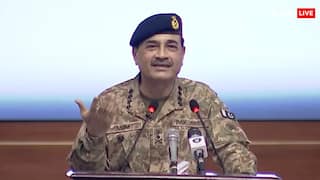Union Cabinet And Council Of Ministers: Differences, Similarities, Roles, And Functions
Cabinet Ministers And Council Of Ministers: The Union Cabinet and the Council of Ministers have distinct roles and compositions. Here's a detailed comparison between the two.

Cabinet Ministers And Council Of Ministers: Prime Minister Narendra Modi took the oath of office Sunday for his third consecutive term, along with his Council of Ministers. As many as 30 MPs were sworn in to be inducted into the Union Cabinet, while five were administered oath as ministers of state with independent charge, and 36 as ministers of state. In all, 72 MPs, including the PM, will be part of the Council of Ministers.
It has been observed that the terms ‘Union Cabinet’ and ‘Council of Ministers’ often end up being used interchangeably in popular discourse and media, leading to significant confusion regarding their distinct roles and functions in India's governance.
This confusion is rooted in several factors, including the overlapping membership of these two bodies, their joint responsibilities in government decision-making, and the lack of clear public differentiation between their functions.
While both entities are integral to the executive branch of the government, and both are headed by the PM, the Council of Ministers is the larger body, encompassing all ministers from various ranks, and the Union Cabinet is a smaller, more selective group that includes only the senior-most ministers tasked with major policy decisions.
ALSO READ | Govt To Help Construct 3 Crore Additional Houses Under PMAY: Union Cabinet In First Meet
What Is The Difference Between Union Cabinet And Council Of Ministers
In the context of India's parliamentary system, the Union Cabinet and the Council of Ministers have distinct roles and compositions. Here's a detailed comparison between the two:
Council Of Ministers: Definition, Composition, Role, And Size
The Council of Ministers is a larger body that includes all the ministers of the government, ranging from the PM to various ministers handling specific portfolios including cabinet ministers, ministers of state, ministers of state with independent charge, and also parliamentary secretaries.
The Council of Ministers is a constitutional body, headed by the PM.
It comprises cabinet ministers who are senior ministers in charge of key ministries such as home affairs, finance, defence, and external affairs. Ministers of state are junior ministers who may or may not be in charge of independent portfolios.
The council is responsible for the overall governance and administration of the country.
The number of ministers in the council is not fixed. However, as per the 91st Amendment of the Constitution, the total number of ministers, including the PM, should not exceed 15% of the total members of the Lok Sabha.
ALSO READ | Reforms In Focus: Rural Economy To Digital Finance, What India Expects From The New Finance Minister
Union Cabinet: Definition, Composition, Function
The Union Cabinet is a smaller, but more powerful subset of the Council of Ministers. It is the core decision-making body in the government. It is the PM who leads the Cabinet too.
It consists only of those ministers who are specifically designated as cabinet ministers. These are senior ministers who usually head the most important ministries such as home affairs, defence, external affairs, finance, etc.
The Cabinet is responsible for making major policy decisions and setting the direction of the government of the day.
It coordinates and oversees the functioning of various ministries and ensures cohesive implementation of policies.
Cabinet meetings are held regularly to discuss and formulate policies, legislation, and administration.
The Council of Ministers meets less often as a whole and focuses on implementing decisions made by the Cabinet.
Related Video
Delhi flood update: once again AAP points out BJP, for Delhi's present situation




























